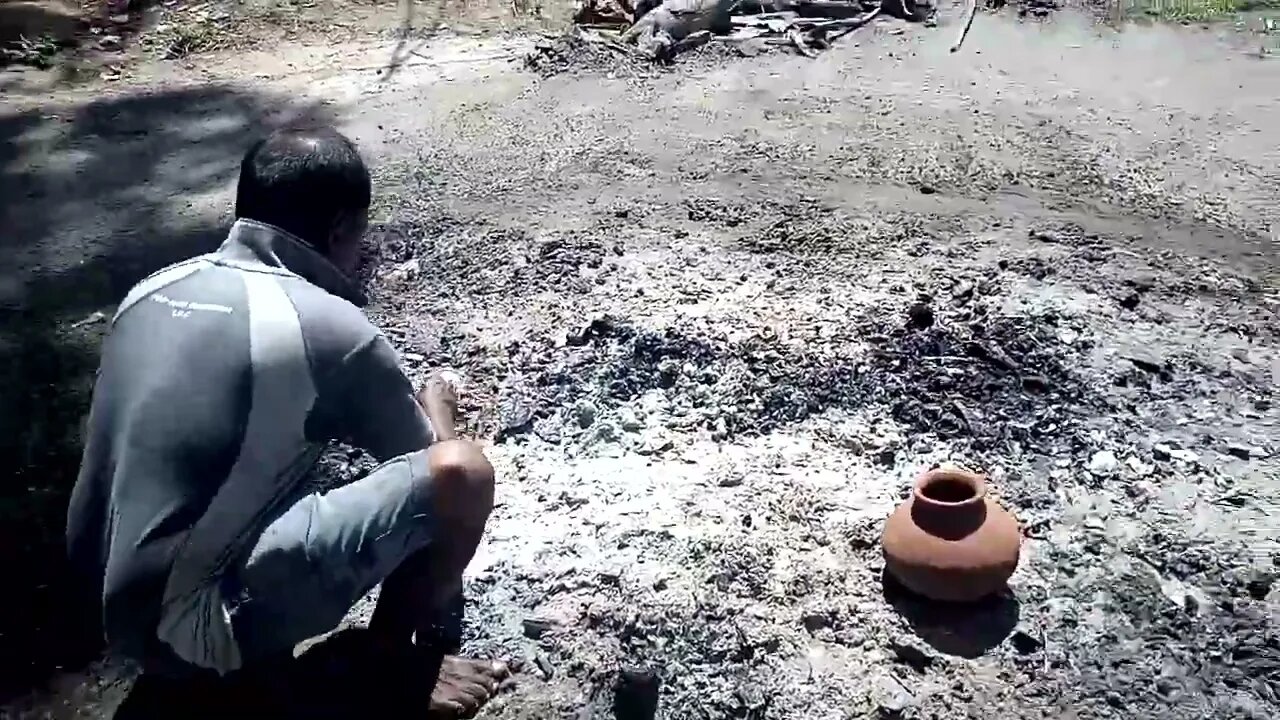Premium Only Content

Hindu Ritual the remains of the cremated being collected
Hinduism is one of the world's most virtue-centered faiths. It is thought that, similar to how our lives end, the soul of a deceased person starts a new, more spiritual and immortal journey. The soul (atman), which is born in a new body via the process of reincarnation, takes on the shape that our deeds (Karma) in the current life have chosen for it to take. The achievement of "Moksha," or release from the cycle of birth and reincarnation, is the ultimate aim of a soul.
These beliefs dictate that several rites and ceremonies must be carried out in order for the soul to find peace and begin its new path. Depending on the family of the deceased, these may change. Family and friends gather for the Shanti path, Rasam pagri rites, Geeta pravachan, and other ceremonies on the fourth day after the death. Teachings on the real essence of existence are given, bhajans are performed, and memories of the deceased soul are recalled.
It is said that the lost person's spirit is aware of whatever feelings individuals may have for them. These ceremonies help the departed person's soul find a new body for rebirth. It is said that by placing the ashes of a loved one in the sacred rivers, one of the most auspicious ceremonies, the spirit is liberated from its ties to the earth and moves closer to emancipation.
The deceased's remains are gathered and stored in an urn after cremation. On the day of the final rites or the third, seventh, or ninth day, they are then submerged in the holy water. Asthi Visarjan is the name of this practice. Families from all over the globe make the journey to Haridwar, Varanasi, Rishikesh, and other locations to perform the sacred rites.
Support our YouTube Channel with a small donation: https://www.buymeacoffee.com/Hindubaktha
-
 2:34:39
2:34:39
Flyover Conservatives
1 day agoEVAN BARKER | Went from Raising $50 Million for Democrat Party to Voting for Donald Trump | Special FOC Show
46.8K4 -
 1:01:43
1:01:43
The StoneZONE with Roger Stone
6 hours agoElon Musk at War with SEC + Cara Castronuova with the Latest on the J6 hoax | The StoneZONE
43.7K3 -
 1:14:00
1:14:00
Edge of Wonder
10 hours agoThe Multiverse Is Real: Google’s Quantum Chip Proves Other Dimensions
67.4K12 -
 1:56:45
1:56:45
2 MIKES LIVE
8 hours ago2 MIKES LIVE #155 It's our 1 YEAR ANNIVERSARY SHOW!
50K1 -
 44:25
44:25
Sarah Westall
8 hours agoEXPOSED PT 1: Fed Gov Involved in Multinational Money Laundering & Trafficking Ring, Senator Finchem
58.6K15 -
 1:27:01
1:27:01
The Big Mig™
12 hours agoJillian Michaels ‘Unapologetic’ ‘Motivational’ ‘Life Influencer’
49K8 -
 56:32
56:32
LFA TV
1 day agoChris Wray Lied About January 6 | Trumpet Daily 12.13.24 7PM EST
35.6K26 -
 1:04:06
1:04:06
In The Litter Box w/ Jewels & Catturd
1 day agoCONFIRMED: J6 FEDsurrection | In the Litter Box w/ Jewels & Catturd – Ep. 705 – 12/13/2024
89.6K63 -
 1:05:58
1:05:58
Exploring With Nug
12 hours ago $2.21 earnedWoman With Dementia Found Alive After Missing In Woods!
19.9K4 -
 1:42:07
1:42:07
Mally_Mouse
9 hours agoLet's Play!! -- Jackbox: Trivia Murder Party!!
38.2K2